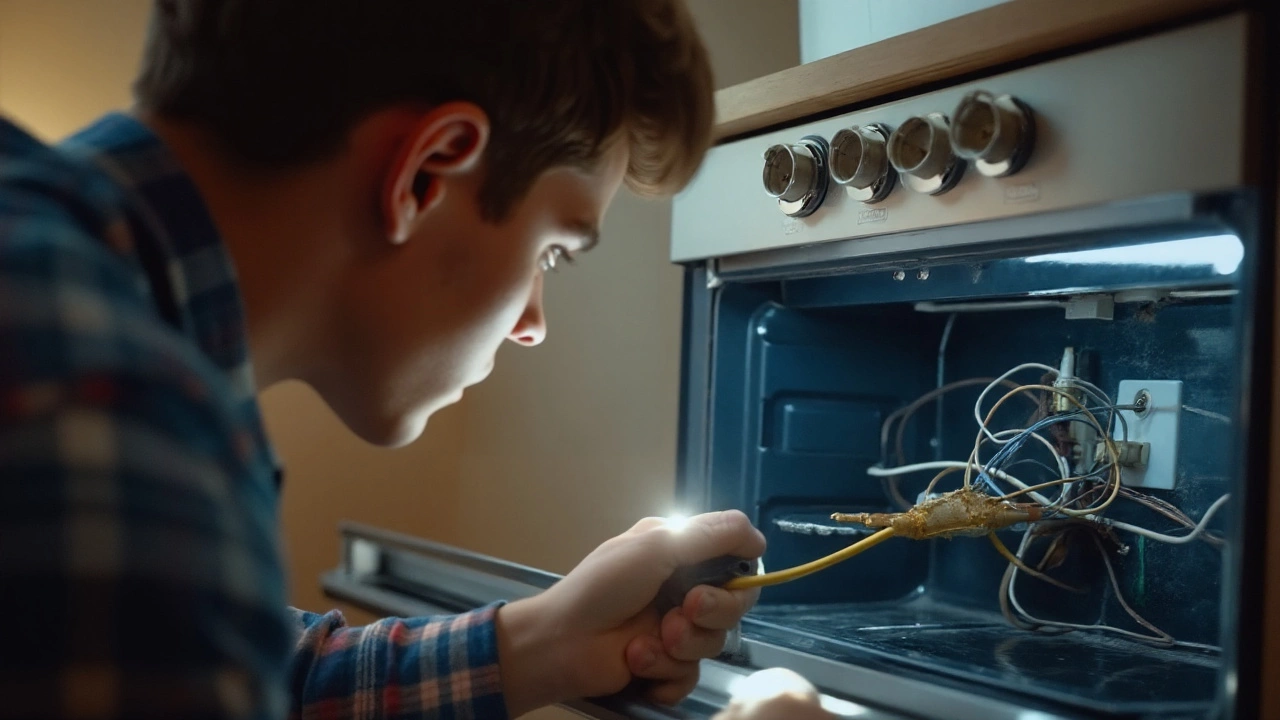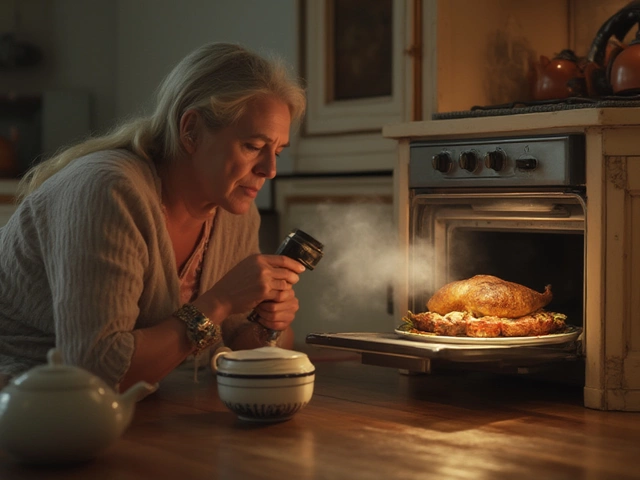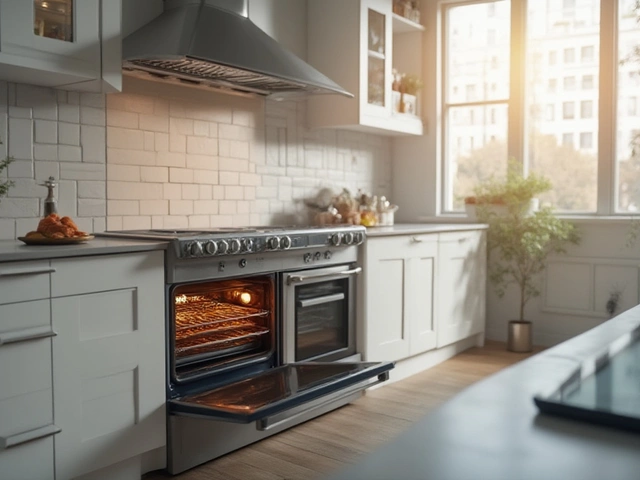You flip on your electric oven, ready for that homemade pizza or maybe a batch of fresh cookies. But after a few minutes, nothing happens. No warm rush of heat, no red glow from the elements, and dinner plans are about to crash and burn. Here’s the kicker: this issue—an oven not heating up—isn’t just the most common electric oven problem, it’s one every home cook faces at least once. The good news: it’s usually fixable, sometimes without even reaching for a toolkit or dialing up a repair guy. Want to save time, money, and your next meal? Stick around, because the secrets of reliable oven performance are just heating up.
The Most Common Electric Oven Problem: Heating Issues Unpacked
Most folks report one thing again and again: the oven isn’t getting hot, or it’s not hot enough. Before you start picturing charred wires and fried circuits, let’s talk about what’s really going on. Nine times out of ten, the culprit is the heating element—those thick, metal coils at the bottom (bake) or top (broil) of your oven. Over time, these parts get worn out with regular use. You’ll sometimes spot a break, blister, or burning on the surface. If you look closely during a bake cycle and don’t see that unmistakable red glow, odds are the element has given up the ghost.
But why do elements fail? They’re just metal, right? Well, constant heating and cooling causes them to expand and contract, which leads to tiny fractures you can’t see at first. Add on spilled food, rough cleaning, and power surges—suddenly, it’s game over. According to Whirlpool, the average lifespan of a typical oven element is about five years with moderate use. So if your oven’s seeing a lot of action or you’re running self-clean cycles, it may wear out even faster.
Of course, heating woes aren’t just about the element. Faulty temperature sensors are big troublemakers too. These little parts, sometimes called thermistors or oven sensors, measure how hot things actually get inside. If their readings are off, even by a few degrees, your oven’s brain (the control board) could shut things off too soon—or just not turn the element on as needed. Suddenly, you’re stuck with half-baked lasagna.
Here’s where things get interesting. According to a 2024 survey of appliance service technicians in the UK, almost 73% of electric oven heating complaints could be traced back to either a burned-out element or a faulty sensor. Less than 10% involved bigger problems—like a broken electronic control board or wiring issues. That means most heating failures are relatively cheap and easy to sort out. But you have to nail down which part’s misbehaving.
| Problem | Frequency (%) | DIY Fix Possible? |
|---|---|---|
| Bake or Broil Element Failure | 54 | Yes |
| Temperature Sensor Fault | 19 | Sometimes |
| Control Board Failure | 7 | No |
| Wiring/Connection Fault | 5 | Sometimes |
| Other (knobs, fuses, etc.) | 15 | Varies |
The good news? Swapping out an element or sensor is a pretty friendly task for anyone who owns a screwdriver and isn’t afraid to unplug an appliance first. Just pop off the back panel (with the oven fully powered down), remove a couple of screws, disconnect and reconnect wiring with a gentle hand, and you’re in business. But don’t skip steps or try to force anything—you could end up doing more harm than good. Always match parts by model number and follow the manual, or at least a trusted YouTube guide.
If it’s not heating and neither the element nor sensor looks bad, check the oven’s settings and power supply. Sometimes the control board needs a reset (flip the main circuit breaker for two minutes), or the oven’s in a sabbath or lockout mode without you noticing. Rare, but it happens surprisingly often.
Spotting Early Warning Signs Before It Gets Worse
Most oven breakdowns don’t happen out of the blue. If you want to dodge a ruined dinner, you’ll need to spot the warning signs—because catching a small problem early means a much cheaper fix.
Here’s what to look for:
- Uneven cooking: Some parts of your dish are raw while others burn. Usually, this means a dying element or off-kilter sensor.
- Overly long preheat times: If it’s taking twice as long to reach 180°C as it used to, the heating element isn’t doing its job. Or, the sensor is reading too cool and dragging things out.
- Temperature errors: You set the oven for 200°C, but your oven thermometer (or the results) disagree. A flaky sensor—or the control board—could be the issue.
- Visible damage: Blisters, burns, or breaks on the element itself. Tiny black or charred spots usually mean a short has occurred and the element needs replacing.
- Odd noises or smells: Clicking, buzzing, or an electrical smell may point to a failing part.
There’s a classic trick too—put a slice of bread or some biscuit dough across the rack when you’re testing the oven. Uneven browning spells trouble with heating elements, especially if the problem side repeats. If browning flips sides when you use fan-bake vs. top heat, that’s a clue about which part is failing. Handy, right?

Fixes Anyone Can Try (and When to Call for Backup)
Before you lose hope (or google the nearest repair van), there are a few things you can safely try on your own. First up: always kill the power at the breaker before poking around an electric oven. Electricity and impatience don’t mix.
How to replace an electric oven element:
- Switch off the oven and unplug it (or cut power at the fuse box).
- Look for screws or brackets holding the bad element in place. Usually these are at the back or sides inside the oven cavity.
- Gently pull the element free. There’ll be wires attached—take a smartphone pic before disconnecting for easy reassembly.
- Swap in the new part (double-check it matches your model), connect the wires, and secure it with screws.
- Restore power, and do a quick bake test—which should show a red-hot glow again.
Temperature sensor replacement works much the same way, though it’s sometimes stuck behind the rear panel. You’ll need a screwdriver and a bit of patience, but the whole process rarely takes longer than 20 minutes if you follow the steps.
If that’s not your thing, or if your oven is completely dead, making loud crackling noises, or tripping your circuit breakers over and over, then don’t mess around. Call a qualified repair tech. Fiddling with control boards, high-voltage connections, or sealed glass oven doors is tricky—and dangerous—if you’re not trained. About 81% of homeowners say they’d rather pay for help with electrical repair than risk a shock (which, by the way, can be fatal in the worst-case scenario).
By the way, most out-of-warranty electric oven elements cost between £10—£35 to buy online, while professional labor will add another £40-£90 depending on your location. Control boards are much more—often £100+, plus install. So, if it’s a simple part like the element or sensor, and you’re handy, it’s worth a shot.
Keeping Your Oven Out of Trouble: Easy Maintenance Tips
An ounce of prevention is worth a pound of pizza dough. Keeping your electric oven in top shape isn’t just about fixing things when they break. With a few easy habits, you can dodge the most common problems before they even start.
Wipe up spills as soon as the oven cools. Old, baked-on food isn’t just gross—it can actually corrode the surface of heating elements and sensors. Even water from a baking tray, if left to sit, encourages rust and short-circuits over months of use.
Run the oven’s self-clean cycle only a few times per year, and only if your manual recommends it. Self-clean gets blazing hot (over 500°C for most models) and is a fast way to age both the element and the electronics. Instead, wipe the inside regularly, and use baking soda paste for tough grime. For the glass door, avoid harsh scouring pads which can scratch up the window and damage the gasket seal.
Check the oven’s door seal every couple of months. If it’s worn or falling off, your oven has to work overtime to fight heat leaks—and the elements fail faster. Door gasket kits are cheap, easy to install, and can save you a lot of hassle.
Don’t overload the oven or block the air vents in the back. You’d be surprised how often airflow problems cause cooking disasters, especially for fan ovens. Leave three to five centimeters of space around trays, pans, and racks. It helps ensure even heating and prevents elements from getting too hot in small spots.
If the oven’s performance feels off, check with an inexpensive oven thermometer. Your built-in sensor may drift by as much as 15°C after a few years. Adjust your recipes or recalibrate the oven as needed—nearly every modern model lets you tweak the temperature offset using a straightforward button sequence (check your manual for this handy trick).

When Electric Ovens Cause Bigger Headaches
Sometimes, that cold oven is just a symptom of something bigger. If you keep replacing elements or sensors every year, or the circuit keeps tripping, there could be an underlying wiring or voltage issue. In rare cases, older ovens can draw more power than your home’s system can handle safely—especially with other big appliances running.
Another less common problem: faulty door latches or switches. Yep, your oven’s got a safety lock, and if the control board thinks the door is open, it won’t start heating at all. You’ll see error codes on digital displays, or just an oven that won’t start.
Be on the lookout for random shutdowns, digital display errors, or oven lights that blink or behave oddly. These problems often spell trouble for the electronics inside. Modern ovens are smart, but that also means repairs get more complex—and pricier. If your display reads "F3," "Er1," or some other cryptic code, grab the manual or search by model online. Sometimes a simple reset works, but other times the board itself has failed.
If your oven gets red-hot but won’t shut off when you dial it down, stop using it immediately and unplug it. That’s a dangerous stuck relay or short circuit that's a genuine fire hazard. Professional intervention isn’t just recommended—it’s essential.
And before you toss your old oven for a brand new one, consider this: most problems can be fixed with £30-£100 and an hour of time. Electric ovens, just like any other modern appliance, are designed to last at least 10 years with good care. If you’re stuck, local repair pros can usually diagnose things within 30 minutes.
A little patience, regular maintenance, and knowing the signs of trouble can keep your oven humming for years. And once you’ve fixed it yourself—even just once—you’ll never stress about preheating again. Here’s to never eating takeout just because the oven wouldn’t cooperate.




